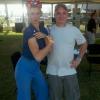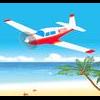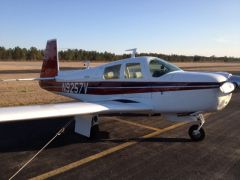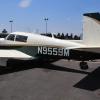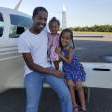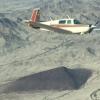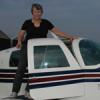Leaderboard
Popular Content
Showing content with the highest reputation on 07/16/2015 in all areas
-
Now that the NTSB Preliminary report for the Plainville, MA accident has been published it's time we all faced the facts. First of all, Plainville Massachusetts is anything but a "densely populated area". The town border touches the extreme northeast corner of Rhode Island, The address of the house that was hit was 25 Bridle Path. A quick look at Google Maps shows that the Wentworth Hills Golf Club was just over 2,000 ft away from the crash site and some town land known as "Burnt Swamp" was just over a mile away. The population of the town in 2010 was just 8,264. We all fly over thousands of towns just like Plainville. The pilot was extremely unlucky to have hit a house in a town like Plainville. The NTSB report makes it sound as if the engine experienced a catastrophic failure. The pilot declared an emergency at 3,300 ft and "queried the controller about the nearest airport". When the pilot said, "we're losing engine" the controller provided vectors to a highway 2.5 miles away. The report says the pilot reported "we're gliding" at an altitude of 1,450 ft. and 40 seconds later the last radar return "showed the airplane in a right hand turn at an altitude of about 700 ft and a ground speed of 66 knots, about a 1/10 mile from the accident site." Of course a 1/10 mile is just 528 ft. Clearly the pilot didn't run out of gas. It's my opinion that pilots in this situation often try to reach the unreachable rather than prepare the aircraft for a controlled crash. Based on my experience of crashing an airplane in the middle of hard instrument conditions into a nondescript area, you must face facts ahead of time that death is a strong possibility, however you can tilt the odds into your favor by sticking to the basics. First of all, by the time you get down to 700 ft AGL you should not be in a turn. At that point you are in the early stage of the crash and you won't be gliding far. The best GPS or synthetic vision won't show you where the trees are. Secondly, the report says that the wx info from North Central Rhode Island Airport 8 miles away was that the wind was 010 at 9 knots. So the aircraft should have been headed at 010. ATC and pilots often ask about airports far away but don't ask for any wind information. Pilots should be checking wind direction just as they should check altimeter before an instrument approach. The NTSB report stated that the right flap actuator was in the position consistent with a retracted flap position, but that the left flap actuator had been consumed by fire. Obviously, if the flaps weren't in the down position at 700 ft the pilot was not prepared for a controlled crash. I understand that double-guessing a dead pilot can be a terrible thing, and in this case the flap position and heading and maintaining minimum controlled airspeed might have made no difference because of the house ahead in his flightpath hidden in the fog, but we should all do our best to reduce the final risk. Remember, crashing at twice the speed results in four times the force. If you crash into a forest at minimum speed, the trees tend to bend at first absorbing energy and you are surrounded by steel tubes, an aluminum cocoon, and a windmilling prop up front. You may pop out to the edge of a small field and if your gear is up the prop may dig in as it bends absorbing energy before you hit something at a slower speed. Those of us that fly single engine IFR have to face up to the fact that we all fly well beyond glide distance to airports over nondescript locations frequently. Personally, when I bought my Mooney I decided it was the right plane for me, not so much because it would fly fast, but because it could fly slow. The stall speed of a Mooney is significantly lower than an A36 like the one that crashed in Plainville. - My advice is to imagine the worst situations in your mind while relaxing at home and decide on your course of action if this terrible situation should ever happen to you. Imagine the best solution first, then imagine it doesn't work out,,,,and then what you will do?6 points
-
Interestingly, the stall speed of my Beech Sierra turns out to be about 4 knots higher than the A36. As for gliding if you pop out high enough, I think slowing down is likely to become more important than picking up speed. After I tried to glide back to land and I was lined up into the wind, I not only had the flaps down, but I pushed the prop control forward rather than trying to reduce drag. Although I did many things right there's one observation of which I was mistaken and I think the A36 pilot made the same mistake. When the engine dies with your CS prop, the load comes off the prop and the windmilling starts and continues at just about the same speed so that you don't quickly realize that you have no power. At first I was convinced that I had partial power even though the loss of power was abrupt. I have read many accident reports where the pilot says he can't maintain altitude long before he knows he's gliding, including this accident. Planning early for the inevitable emergency crash landing can help you face the motions that you must complete. When I use my chain saw I always watch my hands move purposely slower than normal so that I don't cut off my leg. During my accident everything seemed to go in slow motion. I was determined not to yank or twist the yoke abruptly. I watched my hands shake from the adrenalin, but somehow I maintained some sort of Zen mentality as I turned off the fuel, set the flaps and flew the plane in a controlled, slow flight, like I was on rails at the end. After the accident I received a letter from the FAA telling me that I would have to appear at an Accident Reconstruction Meeting. It took several hours but I believe repetition is the mother of learning, and I was congratulated many times by the four people on the panel. I think there's one general mistake that many pilots can make in this situation. You must remember that "perfect" is the enemy of "good". If you have a chance to land in a good spot like a rough flat field, that's good - don't fly past good looking for perfect. If you land into the wind, gear up, on a rough field your chances of landing with no injuries are excellent. Don't try to save the airplane as well as yourself. Just save yourself.5 points
-
Shame on all of you , Peter Garmin did a double blind study of corrosion X on his patients amalgum fillings , and guess what ...... They all went blind......I guess it works.... Back to the original post , Lancaster Aero is doing a treatment on one of my Beeches this week .... Lets see what they charge.....3 points
-
HOUSTON , July 16, 2015 /CNW/ -- ForeFlight, maker of the leading app for pilots, today announced connectivity with Garmin avionics, broadening the flight planning, in-flight, and connectivity capabilities available to customers. When connected to Garmin Flight Stream , ForeFlight Mobile customers can now wirelessly receive ADS-B weather and traffic, precise GPS position data, and dynamic pitch and bank information on iPad or iPhone. Additionally, flight plan transfer capability is currently in development and will be available in a future app update. ForeFlight Mobile now connects to the Flight Stream 210/110, Garmin's Bluetooth ® wireless gateway, and displays the full suite of ADS-B weather and traffic information received via the GDL 88/84. The Flight Stream 210, with its internal attitude sensor, powers ForeFlight's Synthetic Vision and adds backup attitude capability with dynamic pitch and bank information. WAAS GPS position information from GTN™ 650/750, GNS™ 430W/530W navigators, or GDL 88/84 with an internal WAAS receiver can be used to power features like ForeFlight Mobile's moving map, geo-referenced approach plates, and taxi diagrams to enhance situational awareness in the air and on the ground. http://www.prnewswire.com/news-releases/foreflight-announces-connectivity-with-garmin-avionics-300114174.html2 points
-
Today, I just received the official notification granting Mooney Summit, Inc. tax exempt status as a 501©3 corp. All of your kind donations are tax deductible, and excess funds above the cost of producing the Mooney Summit will go to the Bill Gilliland fund, helping downed Pilot families with emergency funds and Crisis therapy. I have witnessed first hand the tremendous need for this charity and encourage all to support our efforts here whether you can attend the Mooney Summit or not. https://www.paypal.com/cgi-bin/webscr?cmd=_s-xclick&hosted_button_id=C42CYZUV7V232 This also means our Subject Matter Experts can deduct the cost of their travel, etc. they have so generously volunteered to make this event happen "to better the breed"2 points
-
I just hope Garmin doesn't buy out ForeFlight and reset market to Garmin is only option. I love the innovation and customer service of the ForeFlight guys.2 points
-
I wish they would allow the GDL-39 to talk to fore flight. To do that would be like putting the Cummins turbo diesel in the Ford F-series pickup. All the others would go out of business.2 points
-
I am the chemist that developed CorrosionX Aviation. I formulated it to meet Mil-C-81309E. The same polar bonding, high dielectric constant chemistry is in Camguard albeit at a lower concentration for motor oil compatibility. I tested Camguard for corrosion inhibiting capabilities in an analogous fashion to testing CorrosionX. However, I did it under conditions based on ASTM D6557 (Bal Rust Test) ulilized by the automotive oil developers for obvious reasons. Ed2 points
-
People who say pulling a cylinder is a good thing have probably never done it.And then all you learn is that the cam/lifters look good now. Does not mean they will last 10 or 50 more hours. It would be an all day job then you have to do trust flight hours. Pull #3 if that floats your boat. The nice thing about an older engine with original parts is that the metal in the components is better than the 90s metallurgy. Fly it till it makes metal in the oil filter. New engine or old engine you are going to have to drop some coin on it at some point. When were the mags done last?2 points
-
2 points
-
I'm just amazed the picture was posted right side up. If anyone should be having problems posting pictures right side up, it should be the guy from down under, not you guys! Sent from my iPad using Tapatalk2 points
-
1 point
-
Here is a link to a Camguard video describing the monomolecular film formation/polar bonding of corrosion inhibitors such as Camguard and CorrosionX. https://drive.google.com/file/d/0BwLugqd6FEj9bHZQLWpFcy1UMW8/view?usp=sharing Ed1 point
-
In 25 hours, we have reached our capacity of 95 pilots plus companions. The registration site will still accept 15 standby registrations that will be moved into registered status if and as cancellations are received. Thanks to everyone who has registered, and thanks to the 7 who have donated so far to help make this possible.1 point
-
You and me both. Just remember, the water temperature in that lake is in the fifties. Hypothermia in around 30 minutes assuming you survive the ditching and get out. I still say go north around the UP or south and get a good view of Chicago. That said, I doubt you'll be exposed to a lake ditching as long as I would in my Cherokee, you're a lot faster. I've flown over the lake on the ay back, mostly to catch the tailwind. Either way, good flying and see you at the show!1 point
-
1 point
-
This seems legit. Garmin lists Foreflight as supported software on its web site. https://buy.garmin.com/en-US/US/in-the-air/avionics-safety/sat-comm/flight-stream-110-210/prod153681.html1 point
-
This is why I love being on the Forum. I learn, get entertained, and get to dream at the same time. I myself being the rookie that I am, I probably would not have spoke up. I would hope the pilot understands that there is a serious problem, but it is not my place to judge. I just am not experienced enough. Now, that said, if I saw someone taxi with a flat tire, yes, I most likely would say something. " you got a flat tire? Nope, the other three swelled right up"1 point
-
Man of those older Lycoming engines also had 7/16 valves which had a 1200 hour TBO and had a nasty habit of breaking off1 point
-
1 point
-
Yikes - I can't believe this is something I never thought of before: a) if you have a reasonable possibility of gliding to an airport then tail wind is good. If you do not, then head wind is good.1 point
-
Thanks, Ed. Now let's hear Peter explain how he can hold two simultaneous, opposing ideals in his head for us. Because I know he has positively jumped all over you about Camguard, now let's hear how and why he likes corrosion-x so much.1 point
-
In my experience the two most important instruments to watch at less than 1,500 ft and nowhere to go, is the airspeed indicator and the turn coordinator. The trim wheel should be all the way back and the airspeed just below the white arc (assuming the airplane is flying below gross). Keep the ball centered and wings level. Remember beforehand that the stall warning will be blaring and my warning to lower the gear was beeping too. Be ready to drop the nose into the first clearing of any kind you see and crack the door. Get the flaps down and make sure the plane is headed into the wind before you get too low. Some pilots ask ATC for help when the airplane is close to the ground and ATC can't do anything for them. Stay in control of the airplane. Never lose hope.1 point
-
Bob is coming and presenting, but he is not with Mooney International. Instead, he currently works for Blackhawk Aero. One is hard pressed to find someone who knows more about or how to fly a Mooney better than Mr. Kromer. We are fortunate to have him attend. With him, Dmax, JLRP and a few other noted, it might be hard to keep order1 point
-
Maurader, very likely. I had a similar problem with my WX500... a storm following me about 200 at my 6 o'clock. I was really getting paranoiac... Then I changed the strobe to a LED and issue resolved. On the other issue no clue...1 point
-
Hmm.... pliers and a set of 30-weight ball bearings don't seem like a bad idea after all...1 point
-
When you get the old wind lace out... Save it to use it as a pattern. Cutting notches into the the wind lace support is basic sewing 101. Best regards, -a-1 point
-
Hey... Bob Kromer and Mooney back together again...? Reading Bob's work, I got to know a lot about the Mooney I was looking for... Best regards, -a-1 point
-
Part 23 doesn't matter. My Mooney is a CAR 3 plane. What do THOSE regs say about light bubs?1 point
-
Good Evening All, I realize I’m a little late to the party, as I have been looking at the registration site code for the past 7 hours instead of checking email like normally. I have found that there are some issues with the latest Mozilla Firefox and latest versions of internet explorer. Feel free to email either Mike or I directly if you wish to register and are having difficulties. We will get you added in the order received. I’m working to resolve the issues, but at the rate we’re going (86 registrants currently) we may hit capacity before I can actually fix it for this registration run. In any case, thanks for your interest and support!1 point
-
1 point
-
That is the windlace. Aero Comfort in San Antonio sells leather replacement kits for both doors.1 point
-
Come on guys, its all ball bearings these days, Now prepare that Fetzer with 3 in 1 oil and some gauze pads. And I'll need some anti-freeze - Prestone, no no, make that Quaker State.1 point
-
1 point
-
it'd do just fine, so fine in fact it'd be right back up in the air and flying immediately after the bounce.1 point
-
Erik, I am a theoretical corrosion X advocate, but like you, have not gotten around to having my plane done yet. I need to get a fine enough tip for my sprayer to make a mist, and the motivation to get the job done. I would like to hear from the guys who have done it themselves to get the particulars about how many panels they removed, how they knew how much to use, how much it actually took and other details I haven't thought about.1 point
-
Luggage compartment bottom panel The aluminum panels take about 30 minutes to make, it would be faster if I had a brake instead of a hammer and edge of a table. All in for the panel creation and install should take about 8 - 10 hours. Things may slow up for the side panels. We will see. Cutting for the rest of the baggage compartment panels. All in it looks like it should be around $750.00 including the floor carpet by the yard ordered this morning. Maybe 15-20 hours labor. Have not seen a full leather luggage area offered. I would have had to pull the panels anyways since the people in the business did not have patterns available.1 point
-
1 point
-
I guess we'll need Peter Garmin to drink a little bit of it to find out what really is in it: http://www.corrosionx.com/msds/corrosionx-aviation-msds.pdf Check out section 2... Sent from my iPad using Tapatalk1 point
-
Personally, I lubricate everything with CamGuard. [emoji13] Sent from my iPad using Tapatalk1 point
-
Last CFII I rode with firmly chided me for the downwind, base, final gear check. He was of the opinion that I should put the gear down on downwind (or FAF) as usual, keep my hand and eyes on the switch until the indicator turns green, and let that be the end of it. He thought checking again was redundant and distracting. I found keeping my hand on the switch for the gear to go down to be distracting, the kachunk said 'gear down' for me, and the green light confirmed it.I really need the GUMPS check on short final, otherwise it's like leaving home without brushing my teeth. Feels very wrong. So, I continue to do it my way.1 point
-
I check it twice. Every time I get to the hangar before I pull the plane out and when I return from a flight before I push it back in. The tow bar works better with the gear down!1 point
-
Well, I think you did just the right thing Shad. But I can see how this would happen. Say the plane sat for a couple of weeks before the trip and the pilot started with 8 qts. I don't know what the Cirrus capacity is but just for the sake of discussion lets say it 8 quarts, and the minimum safe amount is 5. They get in the plane, start it up, and right away they "lose" a qt. because that amount of oil that had drained into the sump is now distributed throughout the engine. They still have 8 qts., but if you read the dipstick at that point it would say 7. Now they fly approx. three hours, burning a quart an hour, then pull the dipstick. It will say 4 qts., but in reality the engine is still at 5. Then, being a careful pilot and trying to nurse the engine to TBO, the pilot puts in 4 qts until the dipstick says 8 again. In reality the engine has 9, but that is what I would do if I were going to immediately continue my trip flying an engine that burns a qt. an hour. Lets also say the guy knows what he is doing and knows that the compressions are at minimums on all the cylinders, and the oil burn rate has been slowly increasing to the current level rather than getting there all of a sudden. The engine is indeed telling him something, it is telling him that it is old and tired. It is also possible there is a bigger problem. Once upon a time I was seeing a burn/loss rate like that in my 231 and the A&Ps were just telling me the "old and tired" thing. In reality, I had that tiny piece of plastic in the quick drain which eventually became a big deal, and when it was cured the engine went from a quart an hour to a quart every oil change, and I fly enough that I change oil at 40-50 hours normally. So knowing what I know now, I would not ever listen to the "old and tired" thing. But then I do not know this guy's engine, I know my engine, and there certainly are engines that are old and tired and burn that much per hour. There really isn't anything you can do except speak to the fellow pilot politely and give him your opinion.1 point
-
1 point
-
Never say this ^^^^^^ phrase. It only encourages Chris to post pictures of things you can't unsee...1 point
-
Although I like this advice best,,,, their is this... IO360A1A Engine IO360A1A ENGINE • $13,000 • AVAILABLE FOR SALE OR EXCHANGE • 750 Hr complete engine with all accessories. No prop strike. • Contact Chuck Ventura - VENTURA ADVENTURES, INC., Owner - located Los Altos, CA USA • Telephone: 650.400.6989 . • Fax: 650.948.8232 • Posted June 28, 2015 • Show all Ads posted by this Advertiser • Recommend This Ad to a Friend • Email Advertiser • Save to Watchlist • Report This Ad1 point
-
That sounds like a bad option the more I think of it. Theres is a half chance the engine you are buying has spalled lifters. So then you paid 18-20 grand for an engine thats really no better than you have.1 point
-
The only thing that complicates it is if you want the word "overhaul" in the book. The bottom requires removal the top doesn't. Thus if you didn't do the cylinders there should be minimal incremental expense. We have no idea from the original poster if the cylinders are also 1500hrs or maybe they are only 200hrs. IRAN works just as well on engines as it does on anything else. I am not advocating short cuts but it is silly IMHO to spend money to fix things that don't need to be fixed just so you can meet the minimum requirements for the word "overhaul".1 point
-
I don't think anyone is suggesting hiding the problem just repairing what needs to be repaired. Mike Elliot gives a good example. If the issue is a crack in the case why would redoing the cylinders and other parts be beneficial if they don't actually need it?1 point
-
I use G-Force at Akron Canton airport for my Bravo. They are very compatible and no complaints. Steve is the IA and shop manager, great guy and very knowledgeable.1 point

